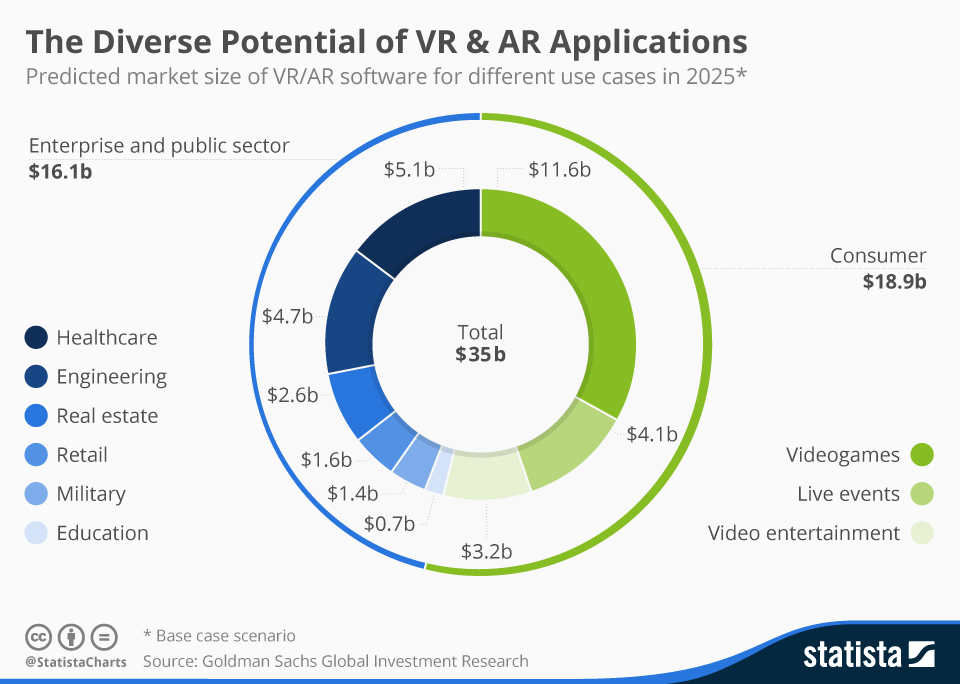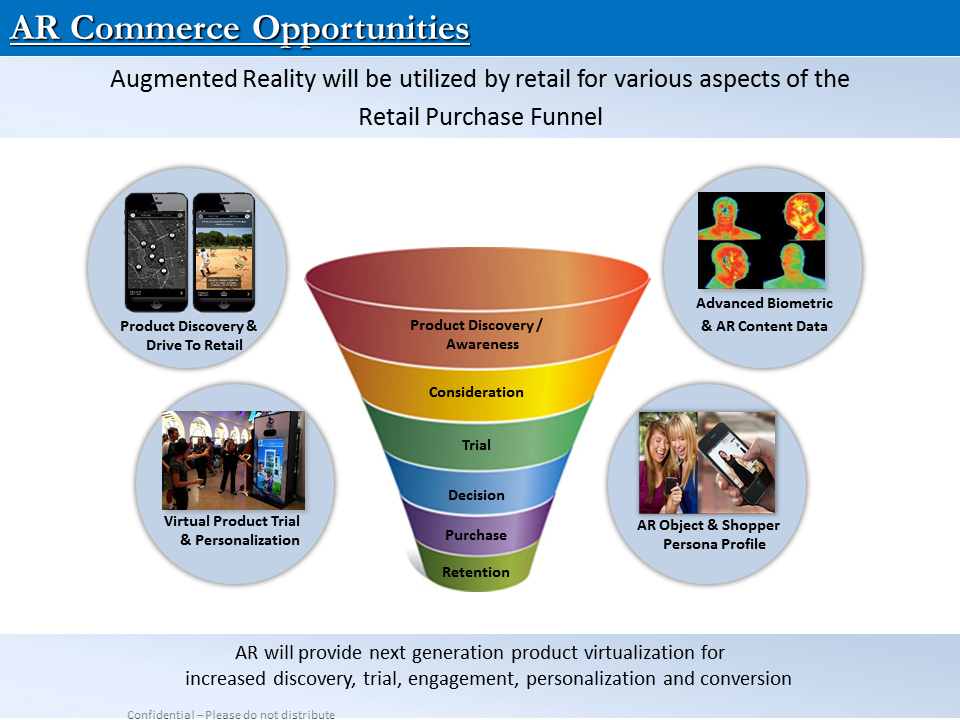Statista recently posted a chart outlining Augmented Reality and Virtual Reality Software Market Projections. The chart is based on data from Goldman Sachs and is one of the first Augmented Reality and Virtual Reality market projections to solely focus on AR/VR software. You can view the chart below.
Over the last few months, there have been numerous Augmented Reality and Virtual Reality market projections coming out from Goldman Sachs, Digi-Capital, and ABI Research. These market projections tend to range from the Goldman Sachs low end of $80 Billion to the Digi-Capital high end of $120 Billion. You can read more detail here.
We tend to agree with the high end of Digi-Capital’s Augmented Reality and Virtual Reality market projections. As objective as we can be in this matter (as an Augmented Reality company), we think most analysts aren’t seeing the ‘forest for the trees’ with respect to all the different areas that will be impacted and disrupted by both Augmented Reality and Virtual Reality.
Taking retail as example, the chart above projects a best case scenario of a $1.6 Billion market for Augmented Reality and Virtual Reality software for retail by 2025. In comparison, Digi-Capital projects an approximate $10-$20 Billion market alone for Augmented Reality Commerce by 2020. The reason we agree with Digi-Capital’s projections is due to all the areas that Augmented Reality (and to a lesser extent Virtual Reality) will impact for the retail purchase funnel.
At the recent SAP Augmented Reality for the Enterprise event, we presented a slide showing key areas in the retail purchase funnel that will be impacted by Augmented Reality. The slide is below with more detail on the purchase funnel and where different types of Augmented Reality technology will enhance or disrupt areas such as product discovery, trial and retention.
The 4 key areas we highlighted include:
- Product Discovery & Drive to Retail – Augmented Reality utilized on mobile devices will help expose potential shoppers to virtual retail items. While also leveraging geolocation, you can activate AR content in a geofenced area and geofence those areas specific to a store (driving people in-store in the process.)
- Virtual Product Trial & Personalization – Virtual Dressing Room technology will be a key area here where mobile to display synchronization can turn a display into a personal shopping assistant for a shopper – anywhere and at anytime.
- Advanced Biometric & AR Content Data – This is one area we feel the analysts are grossly underestimating or overlooking when it comes to Augmented Reality and Retail. Kinect and other 3D cameras can capture biometric data and physical attributes of a shopper such as skin tone, hair color, body shape, etc. This data can then be used twofold. For the shopper, they can now get personalized recommendations based on how they react to a certain item or receive recommended items based on similar physical characteristics. For the retailer, they can now get real-time feedback on products based on biometric data.
- AR Object & Shopper Persona Profile – With Virtual Product Trial & Personalization combined with Advanced Biometric & AR Content Data, retailers can now offer a more advanced AR-based social shopping experience. Friends can connect from anywhere to virtually shop together and have personalized recommendations. Retailers can also further enhance the Augmented Reality ecommerce experience with stylists that connect with shoppers and view or suggest virtual items in real time.
We only covered 4 specific areas of the retail purchase funnel that pertains mostly to apparel and accessories. But there are other retail areas you could dive deeper into such as using AR for placement of retail display stands or even using mobile augmented reality with 3D cameras to plan and purchase items in a grocery store.
Regardless of the variance in Augmented Reality and Virtual Reality software market projections, we believe that Augmented Reality will have a significant impact on multiple areas in retail. Some of these areas are closer than others to retail adoption, but by 2020-2025, it would be a shock not to see all of these Augmented Reality for Retail areas fundamentally changing the retail shopping experience.
A modified version of this blog post was featured as a recent VentureBeat Op-Ed entitled, “Analysts are overlooking how much AR and VR are about to change our lives.”
APR


